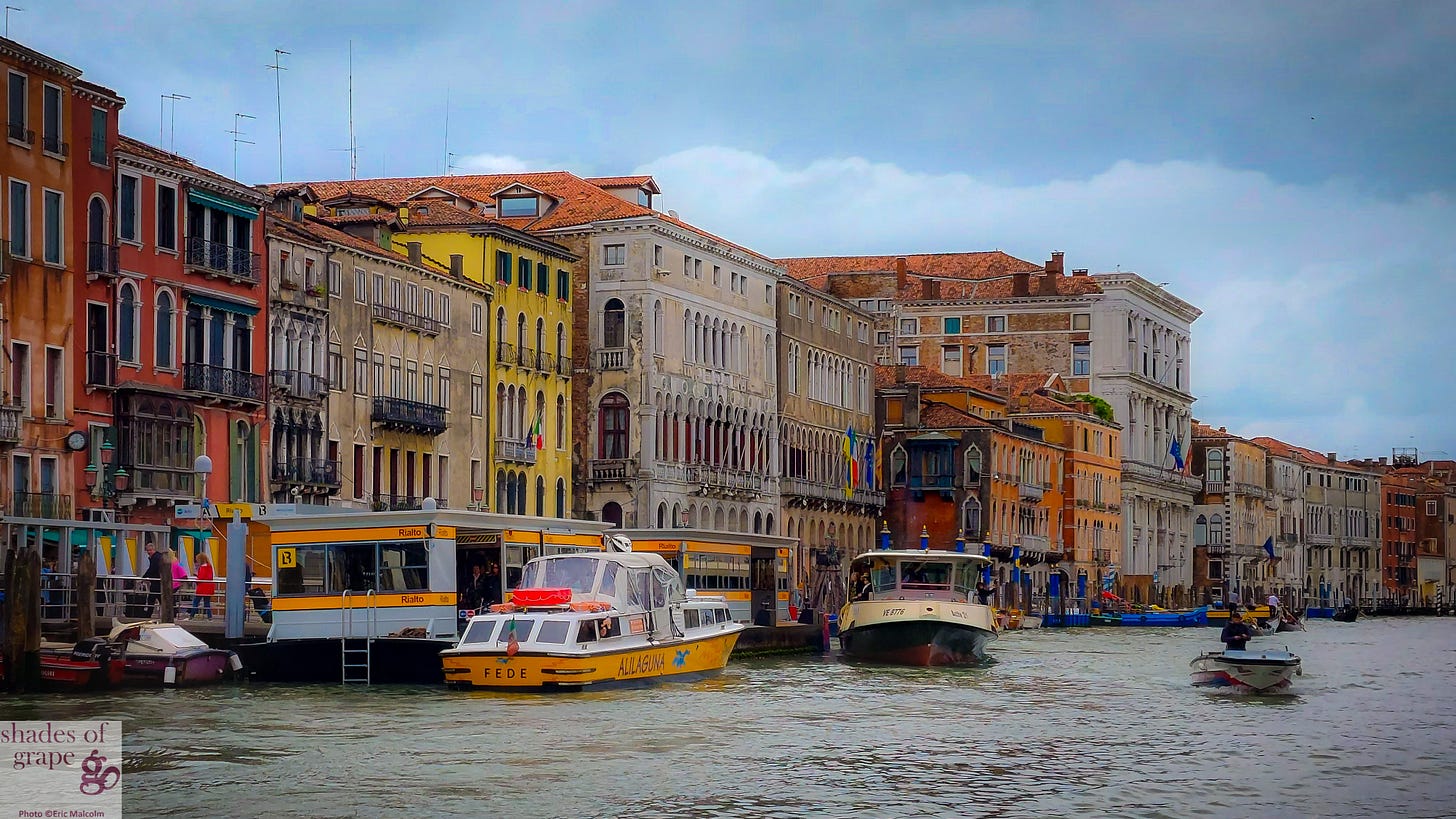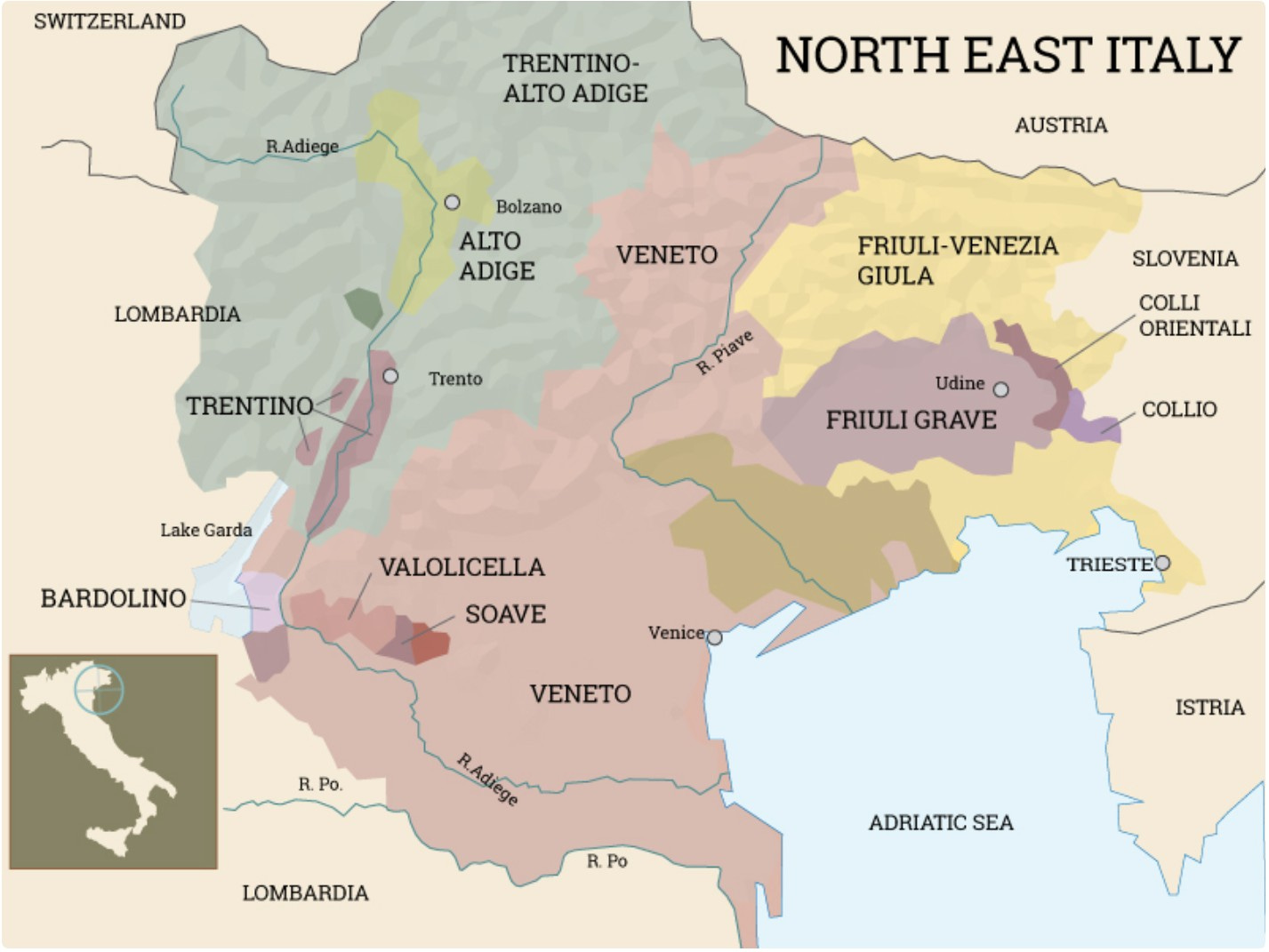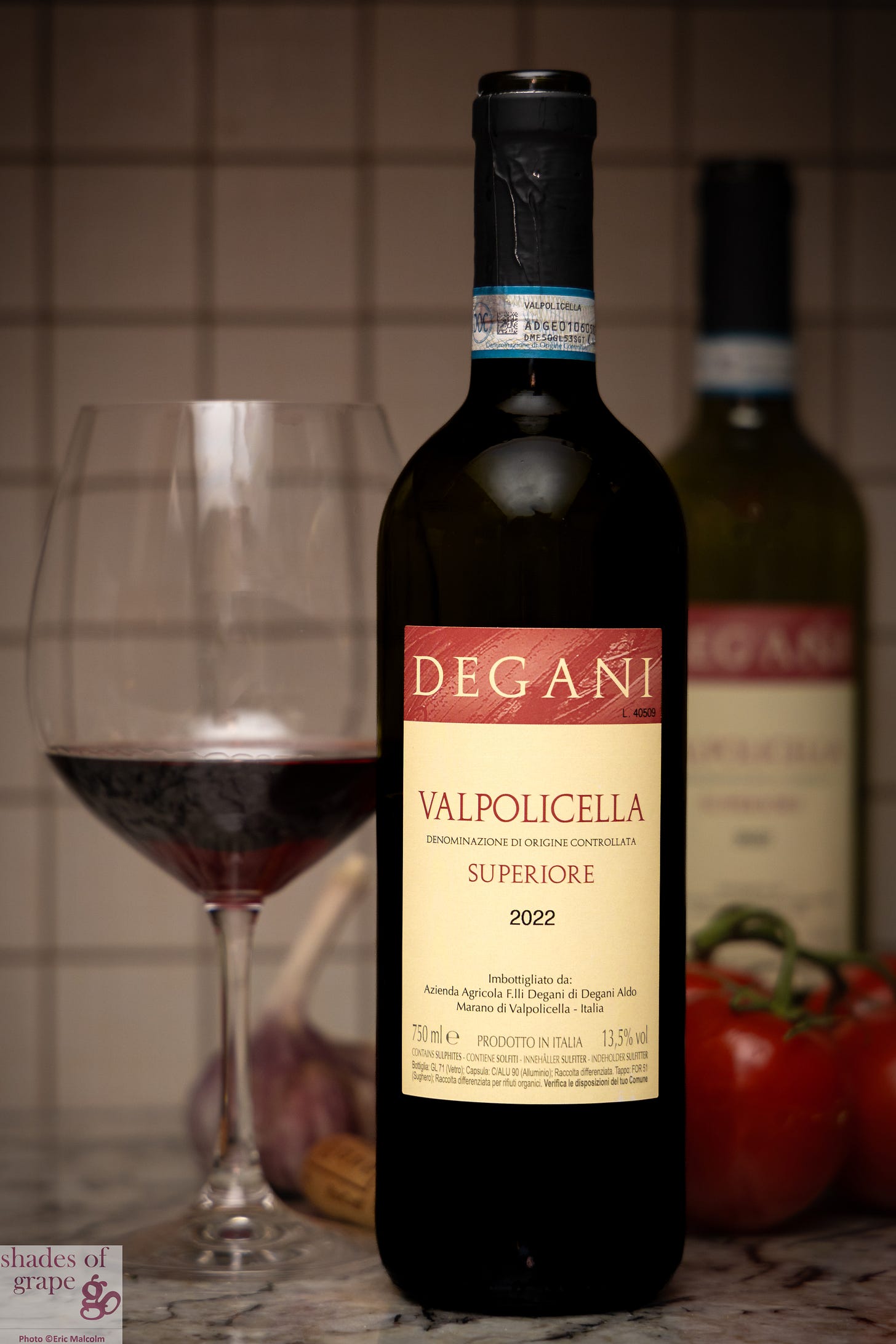Understanding Superiore on Italian Wine Labels - What Does it Mean?
- valpolicella, corvina, classico, & more
Wanna DRINK BETTER? Reach out for one-on-one curation time with me with no commitment or minimum purchase required.
Subscribing is a way to show your appreciation for:
my wine recommendations,
any assistance I provide along your wine journey, or
my writing entertainment!
Last Friday I coordinated a festival-style tasting at a local private club. I love curating so this was fun to put together. Also fun is seeing what the most popular wines were based on sales. What is cool is the crowd tended to pick my favourites too! This is great confirmation with over 140 people in attendance. As to be expected with the Calgary market, red wines were dominant.
Today I am featuring one of the night’s top 3 wines: Degani Valpolicella Superiore 2022 (the other two were the Caprili Ilex that I featured last week, and the Mas Martinet Menut that I featured a couple years ago, which has become an enduring favourite.)
I don’t think you have discussed the term Superiore before. Are you going to explain?
Thanks for the lead in. Superiore is an Italian labelling term that is tricky. Depending on the subregion, superiore can indicate lower yields, a higher alcohol level, longer ageing before releasing to the market, or a combination of two or even all three of these factors.
So what does it mean for the Valpolicella subregion?
The wines must have a marginally higher minimum alcohol level and must be aged for one year after the 1st of January of the year after the harvest. For Ripasso, the values are specified and Superiore wines must be a minimum of 13% alcohol vs. 12.5 % for the “non-Superiore” wines
I don’t understand the alcohol thing. Why is that considered superior?
It’s two-fold.
Alcohol is the biggest contributor of body in a wine. Body is the fullness perceived in the mouth before swallowing the wine. Fullness is a function of the viscosity and weight of the wine and any other sensation created in terms of texture.
The second thing is that higher alcohol require riper grapes, which by definition means they have a higher sugar level
And sugar is what yeast converts to alcohol…
… leading to a “superior” wine because riper also means more development of aromas, flavours, colour, and potentially complexity in ideal growing conditions.
Like simmering a sauce, stew, or soup.
Exactly. And why they are better the next day!
What else are you gonna bore me with?
Ouch.
Sorry, inside thought…
What’s the grape here anyway?
Valpolicellas are typically blends and must contain by law 45-95% Corvina and/or Corvinone, and 5-30% Rondinella. Other varieties are allowed with no minimum content specified.
The Degani Valpolicella Superiore contains: 40% Corvina, 30% Rondinella, 25% Corvinone and 5% other.
Now let’s explain how the Superiore term relates to all the Valpolicella wines.
Right, I remember from your two Valpolicella posts that there are several different wines which vary depending on two things:
geography
grape growing/winemaking.
Let’s start with geography. Valpolicella is a northeastern Italian sub-region immediately north of the city of Verona and east of Lake Garda, within the Veneto wine region. It is about a 120 km drive west of Venezia (Venice).

Valpolicella is broken up in two parts: “the plains” and the Valpolicella Classico zone. These are shown on the map just above as the lighter (eastern) and darker sections (western) respectively. The term Classico means the grapes were grown within a hilly, defined, historic area with theoretically better vineyards for higher quality wines. The grapes for the “non-Classico” wines are grown on the plains.
Easy – I can remember that!
Hey, the featured wine isn’t a Classico. So are you flogging us a dud?
Rude.
There are definitely some vineyards within the straight/non-Classico lands that produce excellent wines. This one is also a Superiore which by definition means that it is a higher quality wine. And the “lack of it being Classico” is perhaps why it is a better value for its quality.
Okay so for better value go for non-Classico, got it.
Not necessarily, but if you are getting are a recommendation you trust – then yes, go for it.
Okay so now let’s get back to all the different Valpolicella wines … the second element is the grape growing and winemaking …
Enter the following terms:
Recioto
Amarone
Ripasso
These wines reflect different ways the fruit is handled in the vineyard and the winery, creating different wines.
The sweet Recioto della Valpolicella and the dry or off-dry Amarone della Valpolicella wines are both made from dried or “raisined” grapes. The Ripasso wine uses the Recioto or Amarone “by-products” for its winemaking.
So incestuous!
Oh brother!
More specifically, at the end of the Amarone or Recioto fermentation, these wines are drained into different vessels leaving grape skins behind. This material is combined with newly completed Valpolicella or Valpolicella Classico wine.
This new mixture undergoes a second fermentation from the remaining sugars and yeast in the Recioto or Amarone grape skins. This provides the Ripasso wine with more colour, flavour, tannins, and alcohol.
Okay so let’s tie it all together. The term Classico can be added to the following wines above if the grapes are grown in the Classico zone.
Yes.
And the term Superiore too?
No.
Since the Recioto and Amarone grapes are raisined they are already naturally at lower yields and higher alcohol levels, meaning Superiore is a redundant term for these wines.
SO.
Superiore only applies to the Ripasso wines in terms of the three wines impacted by grape growing/winemaking.
But can apply to “straight” or Classico wines.
Correct.
To summarize here is a list of all the wines showing what can be labelled Superiore:
Grapes grown on plains:
Valpolicella
Recioto della Valpolicella
Amarone della Valpolicella
Valpolicella Superiore (like the featured wine)
Valpolicella Ripasso
Valplicella Ripasso Superiore
Grapes grown on hilly historical vineyards, aka the Classico zone:
Valpolicella Classico
Recioto della Valpolicella Classico
Amarone della Valpolicella Classico
Valpolicella Classico Superiore
Valpolicella Classico Ripasso
Valplicella Classico Ripasso Superiore
These wines are making me thirsty!
I know that was a lot! The links of my last two Valpolicella articles can be found after the featured wine portion below.
Enjoying my recommendations? Consider upgrading to a paid subscription.
Degani Valpolicella Superiore 2022 from Valpolicella, Veneto, Italy
Style: Medium Body Old World Style Red Wine
Varieties: 40% Corvina, 30% Rondinella, 25% Corvinone & 5% other grapes
This predominantly savory wine has violet, strawberry, red cherry, ripe raspberry, blackberry, cassis, fennel/anise, and earth notes. It has the additional flavour complexity of milk chocolate and hints of leather and tobacco. It has moderately high, slightly grainy ripe tannins, and a long fruit finish.
Best pairings: Pasta with tomato-based sauce, Veal, chicken, or eggplant Parmigiana, Pizza, Porchetta, Roasted poultry, sausage & bean soup/stew, Pork fennel burgers, Cheeses: Asiago or Fontina.
Serving Temperature: 16-18 degrees Celsius
Serving Tips: A quick decant was great, 60 minutes is even better!
Price: ~$28 Cdn
Relevant Shades of Grape links: Keep scrolling
If you're in Alberta and want a one-on-one wine curation experience, please reach out! No commitment or minimum purchase required. Interested? Please reach out!
A huge thank you to my paid subscribers—your support helps cover the costs of creating these weekly articles.
Love my wine recommendations? Enjoy my personal wine curation service? If you find value in my writing, consider upgrading to a paid subscription to help me keep sharing the world of wine with you!
Subscribers receive 15% off Wine & Spirits whenever shopping at Cork Fine Wines, ground floor, Bow Valley Square in Calgary.
LINKS TO RELEVANT PAST SHADES OF GRAPE ARTICLES:
SOURCES:
Andrea (2025) Home - Andrea Wine. https://andreawine.com/.
Chartier, E. (2024a) ‘Amarone della Valpolicella - Drying grapes and raising spirits,’ shades of grape, 18 June. https://www.shadesofgrape.ca/p/amarone-della-valpolicella-drying.
Chartier, E. (2024b) ‘Exploring Valpolicella’s diverse red wine styles,’ shades of grape, 28 May. https://www.shadesofgrape.ca/p/exploring-valpolicellas-diverse-red.
Consorzio Valpolicella (2025) Consorzio Valpolicella - Consorzio Tutela Vini Valpolicella. https://www.consorziovalpolicella.it/.
F.lli Degani Di Degani Aldo (2019) VALPOLICELLA SUPERIORE DOC - Fratelli Degani vini. https://deganivini.it/valpolicella-superiore-doc/?lang=en.
Harding, J. and Robinson, J. (2023) The oxford companion to wine. Oxford, United Kingdom: Oxford University Press.
Robinson, J. (2003) Vines Grapes & Wines: The wine drinker’s guide to grape varieties. McArthur & Co. Publishing.
Wine & Spirit Education Trust (2025) D3: Wines of the World - An accompaniment to the WSET Level 4 Diploma in Wines. Version 1.2. London: Wine & Spirit Education Trust.






